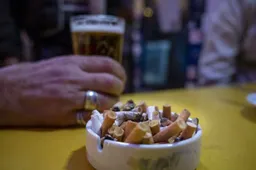
The Times heeft een lijst samengesteld van de beste voedingsmiddelen. De een vanwege het vitamine c-gehalte, de nadere vanwege het hoge gehalte aan anti-oxidanten of vanwege iets anders heilzaam. Houdt je aan de lijst en lang zul je leven.
- Peterselie, ook heel goed om op een stukje te kauwen om je adem goed te maken
- Appels, bevatten 150 nuttige stoffen
- Grapefruit. Ook goed om te gebruiken als voorgerecht. Je eet dan vanzelf minder
- Tomaten. Vanwege een gezond pigment dat onder andere goed is voor de prostaat
- Granaatappelsap. In flesjes te koop bij natuurvoedingswinkels. En volgens The Times zo gezond dat je ze beter maar kan gaan kopen.
- Nieuwe aardappelen. Bijna net zo goed voor je spieren als de sportschool
- Gepocheerde eieren.. Vooral goed voor de huid. Groene Thee
- Visolie
Zie The Times voor de hele lijst
De New York Times heeft ook deze week een lijst van 11. Deels overlappend met die van de Londense Times:
1. Beets: Think of beets as red spinach, Dr. Bowden said, because they are a rich source of folate as well as natural red pigments that may be cancer fighters. How to eat: Fresh, raw and grated to make a salad. Heating decreases the antioxidant power. 2. Cabbage: Loaded with nutrients like sulforaphane, a chemical said to boost cancer-fighting enzymes. How to eat: Asian-style slaw or as a crunchy topping on burgers and sandwiches. 3. Swiss chard: A leafy green vegetable packed with carotenoids that protect aging eyes. How to eat it: Chop and saute in olive oil. 4. Cinnamon: May help control blood sugar and cholesterol. How to eat it: Sprinkle on coffee or oatmeal. 5. Pomegranate juice: Appears to lower blood pressure and loaded with antioxidants. How to eat: Just drink it. 6. Dried plums: Okay, so they are really prunes, but they are packed with antioxidants. How to eat: Wrapped in prosciutto and baked. 7. Pumpkin seeds: The most nutritious part of the pumpkin and packed with magnesium; high levels of the mineral are associated with lower risk for early death. How to eat: Roasted as a snack, or sprinkled on salad. 8. Sardines: Dr. Bowden calls them “health food in a can.” They are high in omega-3’s, contain virtually no mercury and are loaded with calcium. They also contain iron, magnesium, phosphorus, potassium, zinc, copper and manganese as well as a full complement of B vitamins. How to eat: Choose sardines packed in olive or sardine oil. Eat plain, mixed with salad, on toast, or mashed with dijon mustard and onions as a spread. 9. Turmeric: The “superstar of spices,” it may have anti-inflammatory and anti-cancer properties. How to eat: Mix with scrambled eggs or in any vegetable dish. 10. Frozen blueberries: Even though freezing can degrade some of the nutrients in fruits and vegetables, frozen blueberries are available year-round and don’t spoil; associated with better memory in animal studies. How to eat: Blended with yogurt or chocolate soy milk and sprinkled with crushed almonds. 11. Canned pumpkin: A low-calorie vegetable that is high in fiber and immune-stimulating vitamin A; fills you up on very few calories. How to eat: Mix with a little butter, cinnamon and nutmeg.
Bron(nen): The Times New York Times
POPULAIR NIEUWS

Deze drie zinnen maken duidelijk dat je met een narcist te maken hebt

‘Apocalyps als Rusland nucleaire wapens inzet tegen Westen’

Vier soorten kanker verantwoordelijk voor meer dan helft van alle diagnoses: deze vijf risicofactoren heb je zelf in de hand

Vonnis tegen Harvey Weinstein vernietigd

Kun je al dat zitten compenseren door 's avonds te sporten? (nee..)
